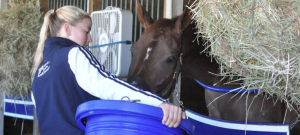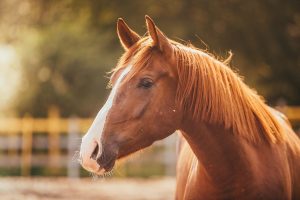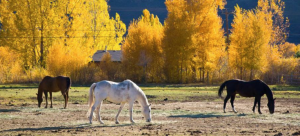
Fiber fermentation in the hindgut provides the horse with energy to grow, work, and play. The fiber fraction of a horse’s diet typically comes from pasture or hay, but there are forage alternatives that can help supplement energy, benefit the digestive system, and provide fiber for horses that have trouble chewing traditional forage. One such forage alternative is beet pulp as a benefit for horses.
What is beet pulp?
According to Kathleen Crandell, Ph.D., a nutritionist at Kentucky Equine Research is, “Beet pulp is an energy-rich source of digestible fiber that helps promote a healthy microbial population in the hindgut.”
Beet pulp is a byproduct of the sugar beet industry. Sugar beets are grown and harvested to make sucrose and sugar leaving beet pulp, which is the plant material once the sugar has been removed. Because of the processing, beet pulp contains minimal sugar.
“Dried beet pulp products are usually available with or without added molasses. The sugar content of unmolassed beet pulp shreds is less than 10%, making it a safe feed for horses that need a low-sugar diet. Shreds with added molasses contain, on average, less than 15% sugar,” explained Crandell.
Beet pulp is considered a prebiotic, meaning it is beneficial to the millions of microbes in the horse’s hindgut. A robust, well-functioning microbiome contributes to overall health. Despite its prebiotic benefit, beet pulp should never be the sole fiber source of the diet. Beet pulp is low in protein (typically 8-10% crude protein) and rich in calcium but is devoid of vitamins and low in other minerals. While research reported in Nutrient Requirements of Horses, published by the National Research Council, showed that a diet consisting of 45-55% beet pulp had no negative effects on the horses consuming it, beet pulp alone will not provide sufficient nutrients, noted Crandell.
How can beet pulp be used?
Beet pulp can be used to help underweight horses gain weight. It provides approximately 1,000 kcals per pound (one quart of dry beet pulp shreds weighs approximately 0.5-0.6 pounds). Byproducts of microbial fermentation of beet pulp in the hindgut include volatile fatty acids, or VFAs, which are absorbed and turned into energy. This energy does not cause a spike in glucose or insulin and is released slowly for a more steady supply. Beet pulp is a common ingredient in commercial grain concentrates because of its energy density and benefit to the microbiome.
Beet pulp can also be used as a top-dressed supplement. Because beet pulp holds moisture, making it useful for adding water to the digestive system, soaking is recommended*. Dry shreds will not swell in the throat or stomach when fed appropriately. Soaking is required if feeding beet pulp pellets, because of the hardness of the pellet and the significant change in volume once pellets are wet.
Beet pulp has an unfair reputation for causing choke in horses. Any feedstuff, including forages, eaten greedily and swallowed without proper chewing can cause choking.
In summary, beet pulp is an option for adding energy and promoting digestive health in horses. Visit J & J Hay Farms for advice on whether beet pulp is right for your horse.
Article brought to you by Kentucky Equine Research.

 Horsemen recognize the importance of good-quality forage for horses and ponies. As such, horse owners are becoming savvier in choosing the best hay for their horses, especially when those horses are affected by metabolic conditions.
Horsemen recognize the importance of good-quality forage for horses and ponies. As such, horse owners are becoming savvier in choosing the best hay for their horses, especially when those horses are affected by metabolic conditions.